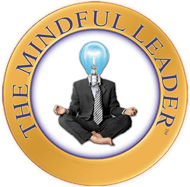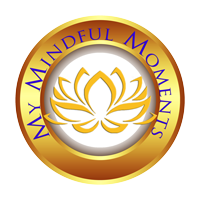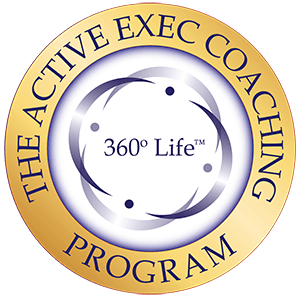If you have ever made the decision to change your life, you may have initially tried to change too many things at once and wound up quitting everything and falling back into old habits. This is why we recommend only choosing one thing to change at a time, focusing on staying with it for a month, and then adding the next new habit to your daily routine. This method will allow you to more solidly integrate each practice as you go, and you will be much more likely to stick with it. In today’s article, we will be introducing you to various different types of mindfulness practices and how to integrate them into your daily routine easily and with minimal time investment.
“There is more than one way to practice mindfulness, but the goal of any mindfulness technique is to achieve a state of alert, focused relaxation by deliberately paying attention to thoughts and sensations without judgment. ... All mindfulness techniques are a form of meditation.”*
Mindfulness practice can actually be integrated into your everyday life from one moment to the next simply by beginning to pay attention and developing your awareness. This is often referred to as an informal mindfulness practice, but it is relatively easy to incorporate into your daily habits because it is an almost constant habit.
How to begin: Be aware of yourself and how your thoughts, words, and deeds are aligning. Are they in alignment, or do you find yourself experiencing emotions that feel unpleasant or uncomfortable? Be present with your emotions and sensations in the moment and practice non-reactivity as well as non-judgment. This will allow you to experience what you’re experiencing and then let it flow through you, let it go. Breathe deeply as you do this to promote a feeling of calm. If you have a challenging time doing this consistently at first, begin doing it at any time you are reminded. The most important thing in order to maintain trust in yourself is to actually do it every time it comes up in your mind.
Breathing mindfulness meditation is another easy way to begin integrating mindfulness practice into your everyday life. In this practice, you only have to focus on doing this once or twice a day for five minutes at a time, and the only thing you are actually focusing on is either your breath or a mantra you repeat either in your mind or out loud.
How to begin: Set aside five minutes before you begin your day and five minutes before you end your day to simply sit, exist, and focus on your breathing or a mantra. If you are a beginner, we recommend focusing on your breathing to start because you may still be suffering from racing thoughts. For a mantra to be more powerful, it’s important to quiet the background noise, so each time your thoughts begin to wander, simply bring your attention back to your breathing.
Another type of mindfulness meditation is the body scan meditation, which is where you focus your attention deliberately on one area of your body at a time, experience and identify any sensations you may be experiencing, allow it to pass by knowing it is temporary, and move on to the next area. Some benefits of this are that it allow you to tune in to your body, which allows you to get better and better at meeting your own needs, whatever those may be.
How to begin: If you need to use a guided meditation for this, we offer one in our My Mindful Moments 30-Day Program through the IMF. You can check that out here: http://www.mindfulnessfederation.org/my-mindful-moments-program/. This program includes a VR body scan guided meditation to make this process easier for you to integrate into your inner work habits. If you want to try this on your own, you can imagine a white ball of light traveling through and around your entire body, beginning at your head and enveloping you from top to bottom, one area at a time.
Loving-kindness meditation (also called Metta bhavana) consists of fostering and cultivating a sense of unconditional love for yourself and others. By focusing on the feeling of unconditional love within yourself, you can begin practicing a feeling like this toward everything and everyone around you. This allows you to easily forgive anything that may come up as well as helping you to be patient and compassionate toward yourself and others in each moment.
How to begin: Sit very comfortably and be still. Once you are calm and quiet, focus your thoughts on feeling loving toward yourself. To make this easier to integrate, you may choose to say or think a few mantras.** Once you have achieved this feeling of unconditional love within yourself, begin shifting your focus to someone whom you have great respect and reverence for, and allow those same unconditional love feelings to flow toward them. Next, focus on someone whom you feel neutral about and flow those same feelings to them. Then think of someone whom you don’t necessarily like and flow those feelings toward them. If this becomes challenging, focus your attention on the person you have great love and respect for, then back on the person you don’t necessarily like. You may then move on to animals and other beings if you’d like.
Observing-thought meditation is another way of practicing mindfulness and developing unconditional love for yourself by redirecting your focus intentionally. You can accomplish this by noticing what thoughts arise, labeling them as positive or negative without getting involved in them or allowing your emotions to become entrenched, and then let these things go without judgment. As you may recall from last week’s article, non-judgment is one of the seven attitudinal factors of mindfulness practice, and the more you can tap into a sense of non-judgment, the less you will be controlled by anything other than your true self.
How to begin: Either during meditation or during your everyday, moment-to-moment experience, pay attention to your thoughts. If you feel angry, irritable, or have some kind of emotional outburst bubbling under the surface, there’s a good chance that your thoughts were kind of going on in the background without you paying attention to or noticing them, and the majority of our thoughts are negative and repetitive, which is how we condition ourselves into pessimistic attitudes and cynical outlooks. If you find yourself feeling badly, stop and pay attention for a moment. Ask yourself why you might be feeling this way. Did something just happen? Was there an experience in the past that you might have been thinking about without realizing it? By asking yourself these questions, you give your subconscious mind the opportunity to present you with the answers in the form of flashes of insight or memories, intuitive nudges, or other subtle indicators.
Though the mindfulness practices you choose to participate in are important, they won’t do much good without the attitudinal practices or realizations as well. Your perception makes a big difference in the way you experience life, and if something feels like a chore, it might not be the right practice for you. This is why simply making it a point to pay attention more closely in your everyday life can make a big difference. If it becomes a chore or seems tedious, it may not be the right practice. However, in order to truly make that call, it has to be given a real chance so that you may rule out that your decision is being influenced by a limiting belief and manifesting as an excuse. This could be the beginning of your adventure into getting to know yourself better so that you may heal your false, limiting beliefs and nurture your constructive, loving beliefs because you are worthy of more than you can imagine.
Thank you so much for joining us here on the Mindful Leader Blog! We hope that you find this information useful as well as enlightening, and of course that you’ll join us again next week for more insight into mindfulness practices and how they serve you as a mindful leader.
Thank you so much for being here, learning, and growing with us!
For more information about the Mindfulness Movement or the International Mindfulness Federation, please visit:
http://executivecoachinguniversity.com/mindfulness-movement
* Benefits of Mindfulness:
https://www.helpguide.org/harvard/benefits-of-mindfulness.htm
** Loving-Kindness Meditation:
http://www.contemplativemind.org/practices/tree/loving-kindness









